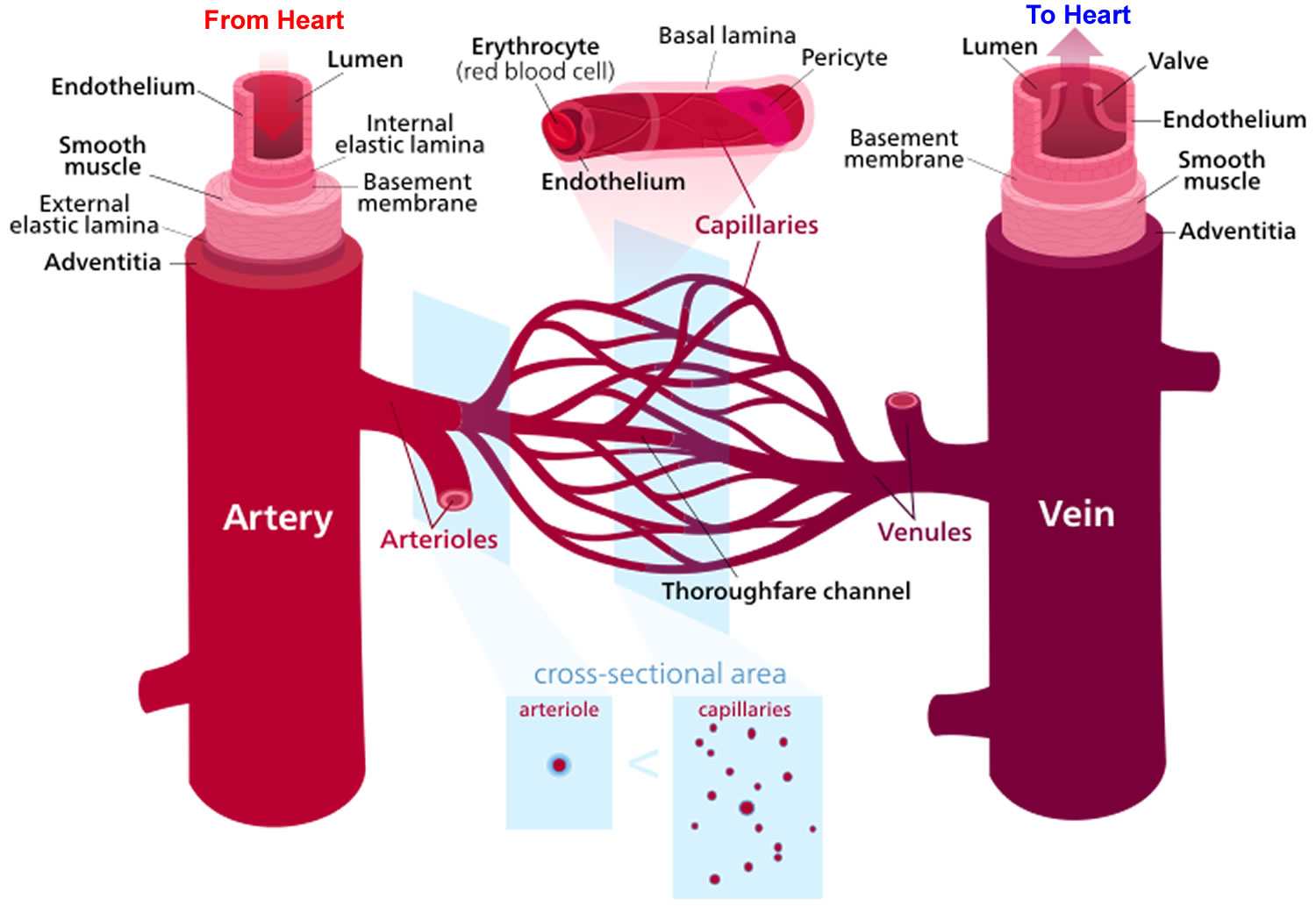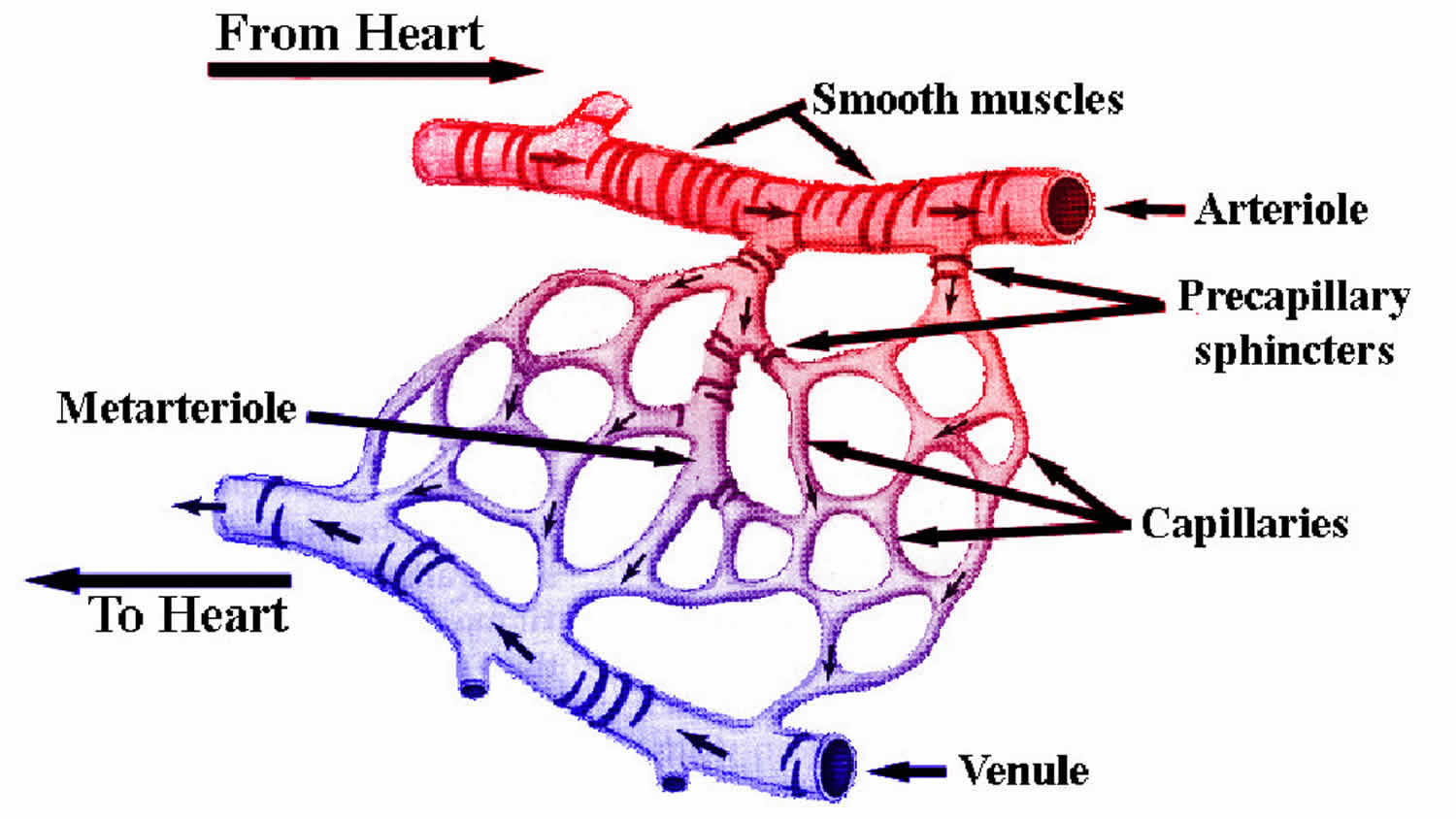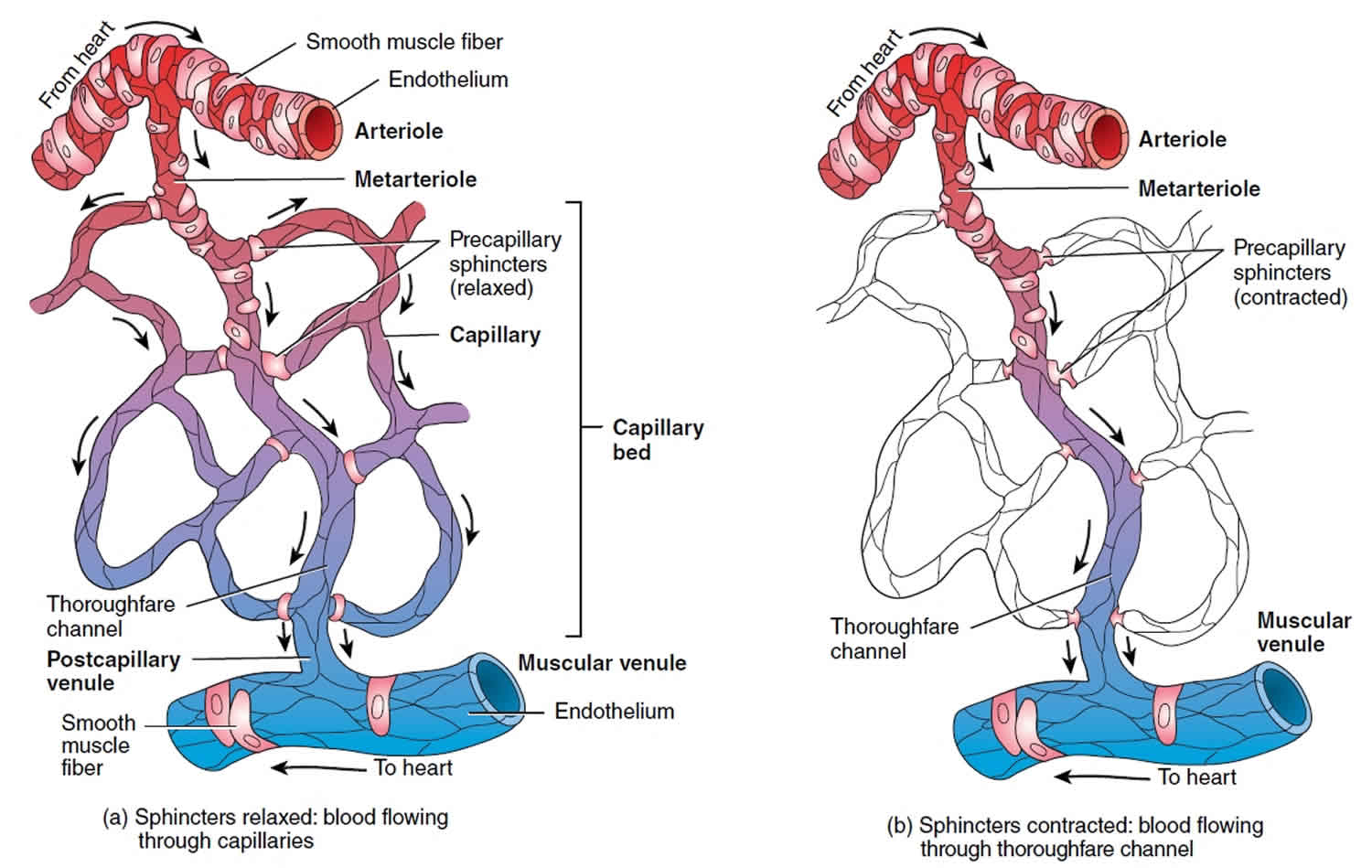Arterioles
Arterioles also known as the “resistance” blood vessels, are small-diameter arteries (diameters that range in size from 15 μm to 300 μm). Arterioles are the primary site for control of blood flow. Arterioles are abundant microscopic blood vessels that regulate the flow of blood into the capillary networks of the body’s tissues. The thin walls of capillaries allow the exchange of substances between the blood and body tissues. Groups of capillaries within a tissue reunite to form small veins called venules. These in turn merge to form progressively larger blood vessels called veins. Veins are the blood vessels that convey blood from the tissues back to the heart. In terms of their structure, all these vessels possess an inner layer of endothelial cells. In addition, the arterioles have a circumferential layer of vascular smooth muscle with which they can control blood flow and its distribution within organs. Venules typically have thinner layers of smooth muscle.
Arterioles have a thin tunica interna with a thin, fenestrated (with small pores) internal elastic lamina that disappears at the terminal end. The tunica media consists of one to two layers of smooth muscle cells having a circular orientation in the vessel wall. The terminal end of the arteriole, the region called the metarteriole, tapers toward the capillary junction. At the metarteriole–capillary junction, the distal-most muscle cell forms the precapillary sphincter (to bind tight), which monitors the blood flow into the capillary; the other muscle cells in the arteriole regulate the resistance (opposition) to blood flow.
The tunica externa of the arteriole consists of areolar connective tissue containing abundant unmyelinated sympathetic nerves. This sympathetic nerve supply, along with the actions of local chemical mediators, can alter the diameter of arterioles and thus vary the rate of blood flow and resistance through these vessels.
Figure 1. Arterioles
Arterioles function
Arterioles play a key role in regulating blood flow from arteries into capillaries by regulating resistance, the opposition to blood flow due to friction between blood and the walls of blood vessels. Because of this arterioles are known as resistance vessels. In a blood vessel, resistance is due mainly to friction between blood and the inner walls of blood vessels. When the blood vessel diameter is smaller, the friction is greater, so there is more resistance. Contraction of the smooth muscle of an arteriole causes vasoconstriction, which increases resistance even more and decreases blood flow into capillaries supplied by that arteriole. By contrast, relaxation of the smooth muscle of an arteriole causes vasodilation, which decreases resistance and increases blood flow into capillaries. A change in arteriole diameter can also affect blood pressure: Vasoconstriction of arterioles increases blood pressure, and vasodilation of arterioles decreases blood pressure.
Figure 2. Arterioles function







